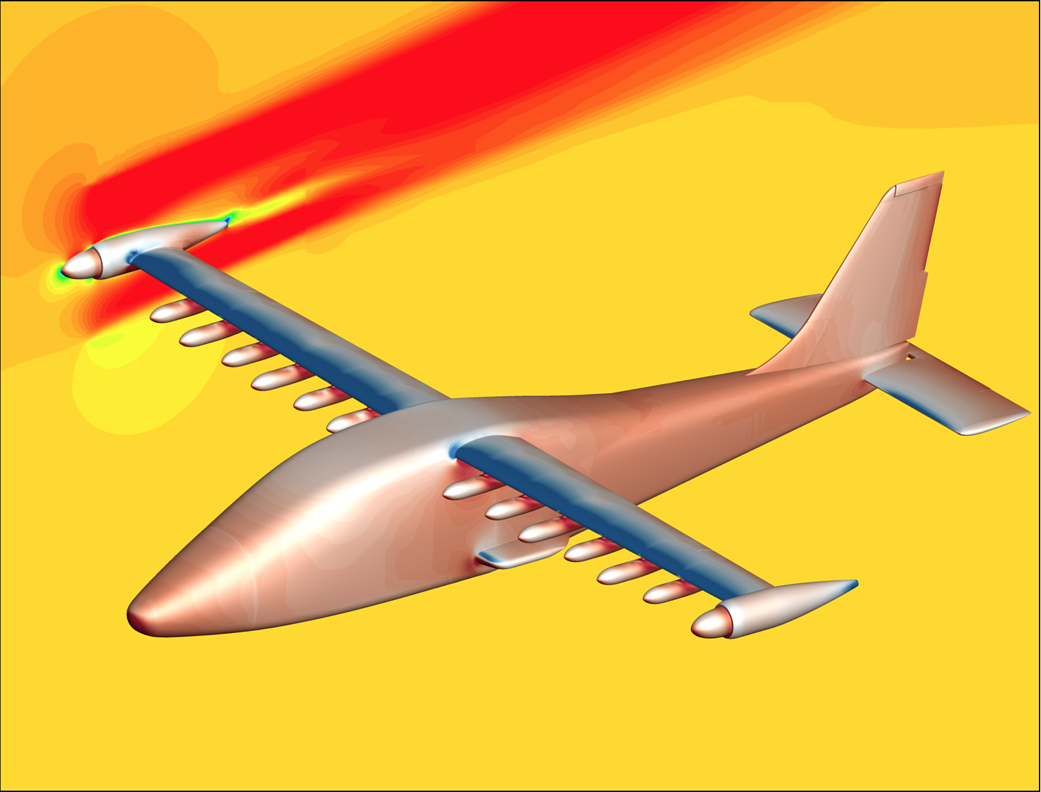
NASA is having fun, with the help of its Pleiades supercomputer, visualising the X-57 “Maxwell” electric experimental aircraft, reports nasa.gov. As the National Aeronautics and Space Administration said on National Aviation Day this week, “Aviation and aeronautics are as much a part of our mission as space travel!”
NASA is developing its first crewed X-plane in more than 20 years. Compared with conventional aircraft, the X-57 team has set a goal of using five times less energy and, if powered by electricity generated from renewable sources, producing zero inflight carbon emissions.
NASA states on its website, “The X-57’s unique propulsion system features 14 battery-powered electric motors and propellers; 12 to provide lift during take-off and landing, and one at the tip of each wing to provide forward thrust during flight.”
The Space Agency goes on to say, “In order to understand the aerodynamic effects of this design better, a team of engineers from three NASA centres – Ames Research in California’s Silicon Valley, Langley in Hampton, Virginia and Armstrong Flight Research in Edwards, California – are using supercomputers to simulate flight conditions for the X-57.
“The moment simulated here (see pic) is from the cruise phase of flight, with pressure shown on the aircraft surface (maroon: high pressure, dark blue: low pressure) and stream-wise velocity, or the speed and direction of air flowing toward the aircraft, near the X-57’s rightmost propeller (top left of image; red: high velocity, green/blue: lower velocities).”
NASA explains, these simulations help the team analyse the aircraft’s stability, its ability to stay in flight and change direction, as well as allow them to create an accurate computer model of aerodynamic performance to incorporate into the X-57 flight simulator.
By accurately predicting the impacts of the X-57’s propulsion system, the aerodynamic model ensures that its flight simulator performs in a manner consistent with actual flight and lets pilots test emergency scenarios and safe recovery measures.
For more information
(Image Credit: NASA/Ames Research Centre/J. Duensing)

